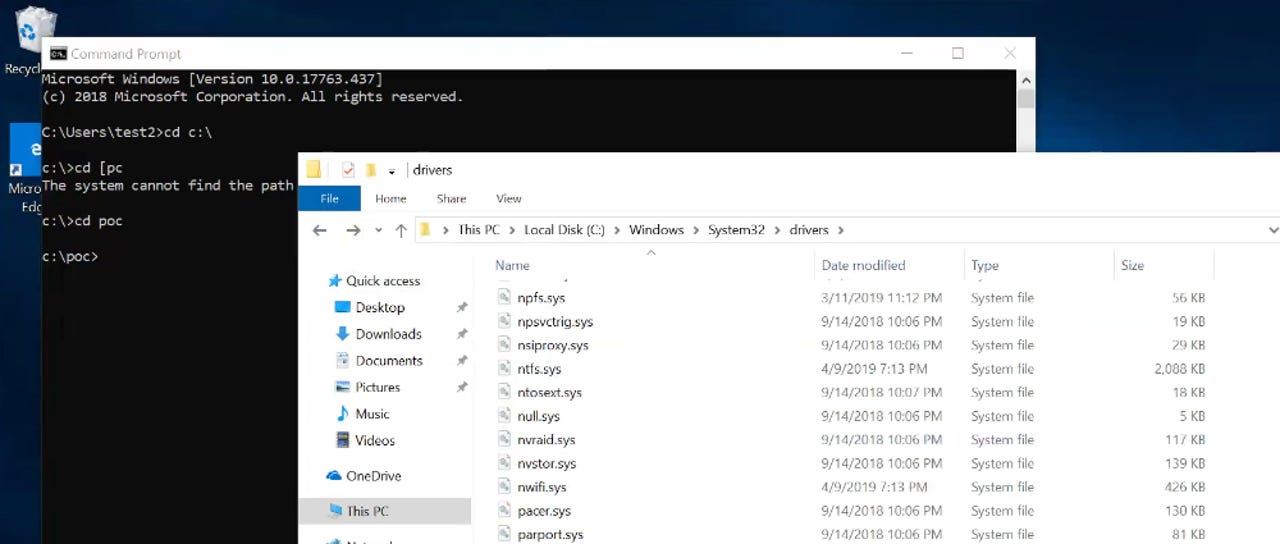Windows 10 zero-day exploit code released online


A security researcher has published today demo exploit code on GitHub for a Windows 10 zero-day vulnerability.
The zero-day is what security researchers call a local privilege escalation (LPE).
LPE vulnerabilities can't be used to break into systems, but hackers can use them at later stages in their attacks to elevate their access on compromised hosts from low-privileged to admin-level accounts.
According to a description of the zero-day posted on GitHub, this vulnerability resides in the Windows Task Scheduler process.
Attackers can run a malformed .job file that exploits a flaw in the way the Task Scheduler process changes DACL (discretionary access control list) permissions for an individual file.
When exploited, the vulnerability can elevate a hacker's low-privileged account to admin access, which, in turn, grants the intruder access over the entire system.
The zero-day has only been tested and confirmed to work on Windows 10 32-bit systems.
However, ZDNet was told today that, in theory, the zero-day should also work, with some fine-tuning, on all Windows versions -- going back to XP and Server 2003 -- although this might require some testing and further confirmation over the coming days.
A demo of the proof-of-concept exploit code is embedded below.
Researcher also released a demo video of the LPE zero-day in action. See below: pic.twitter.com/ZX8XWLQ74z
— Catalin Cimpanu (@campuscodi) May 22, 2019
SandboxEscaper strikes again
The researcher who released this zero-day is named SandboxEscaper and has a reputation for releasing Windows zero-days online, without notifying Microsoft of these security flaws.
In 2018, she released four other Windows zero-days, which included:
- LPE in Advanced Local Procedure Call (ALPC)
- LPE in Microsoft Data Sharing (dssvc.dll)
- LPE in ReadFile
- LPE in the Windows Error Reporting (WER) system
While there has been no reported exploitation for the last three, the first was incorporated in active malware campaigns a few weeks after its release.
Microsoft patched most of these issues within one or two months after they were made public. Microsoft's next Patch Tuesday is scheduled for June 11.
Windows 10 apps: Which are worth keeping? Which ones should you dump?
More vulnerability reports:
- How to test MDS (Zombieload) patch status on Windows systems
- Google to replace faulty Titan security keys
- A large chunk of Ethereum clients remain unpatched
- Intel CPUs impacted by new Zombieload side-channel attack
- Patch status for the new MDS attacks against Intel CPUs
- Root account misconfigurations found in 20% of top 1,000 Docker containers
- KRACK attack: Here's how companies are responding CNET
- Top 10 app vulnerabilities: Unpatched plugins and extensions dominate TechRepublic